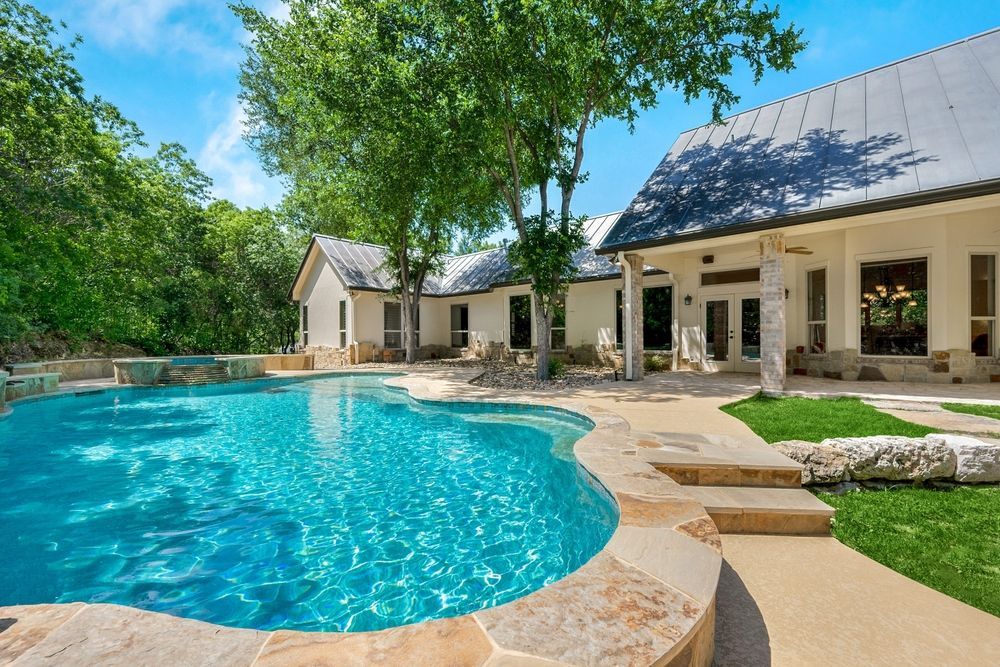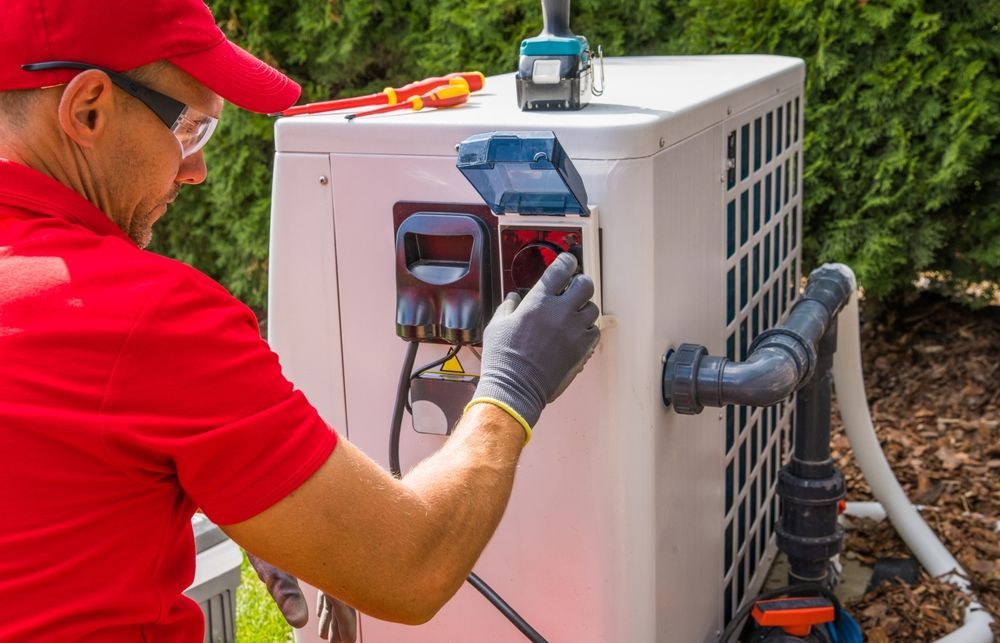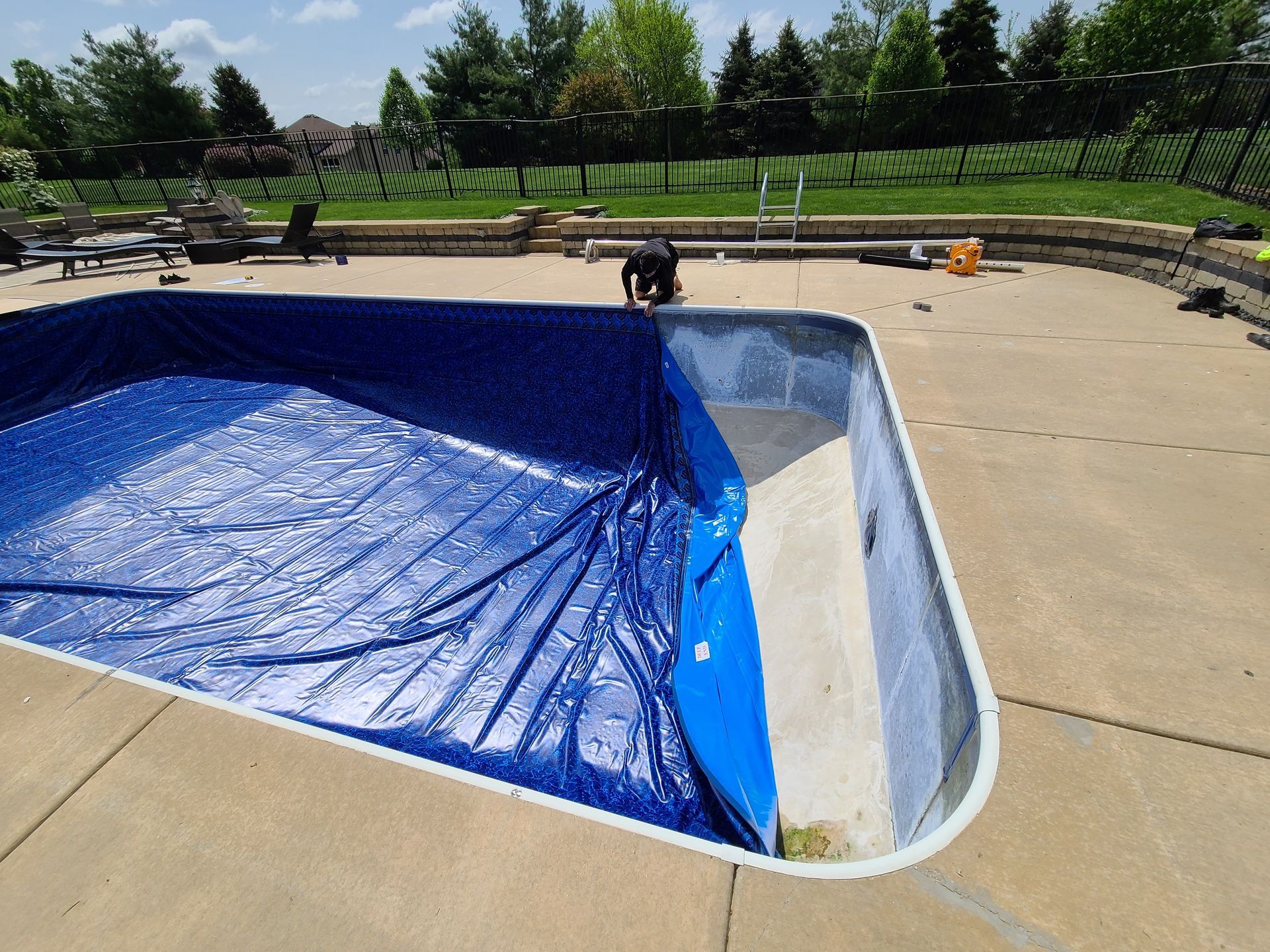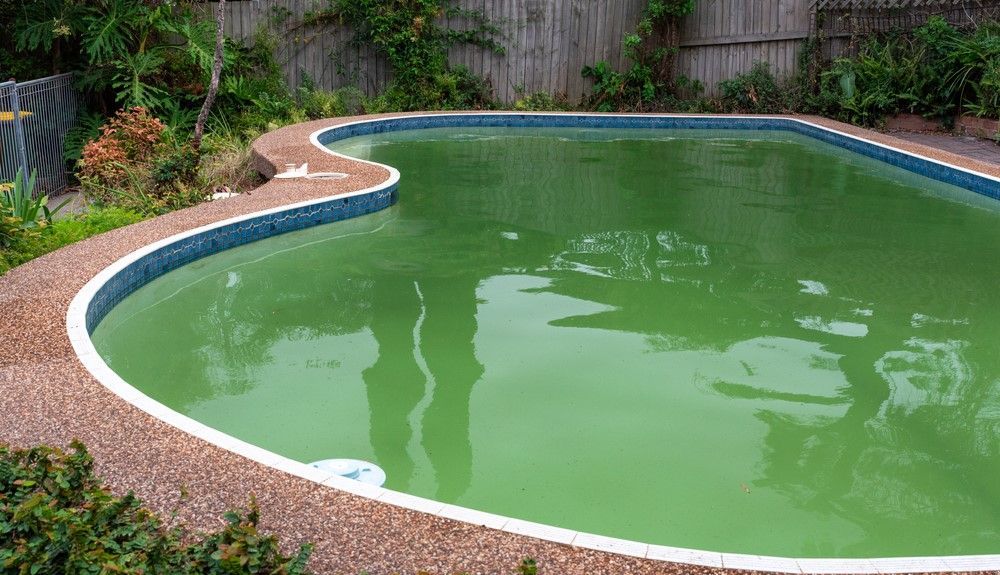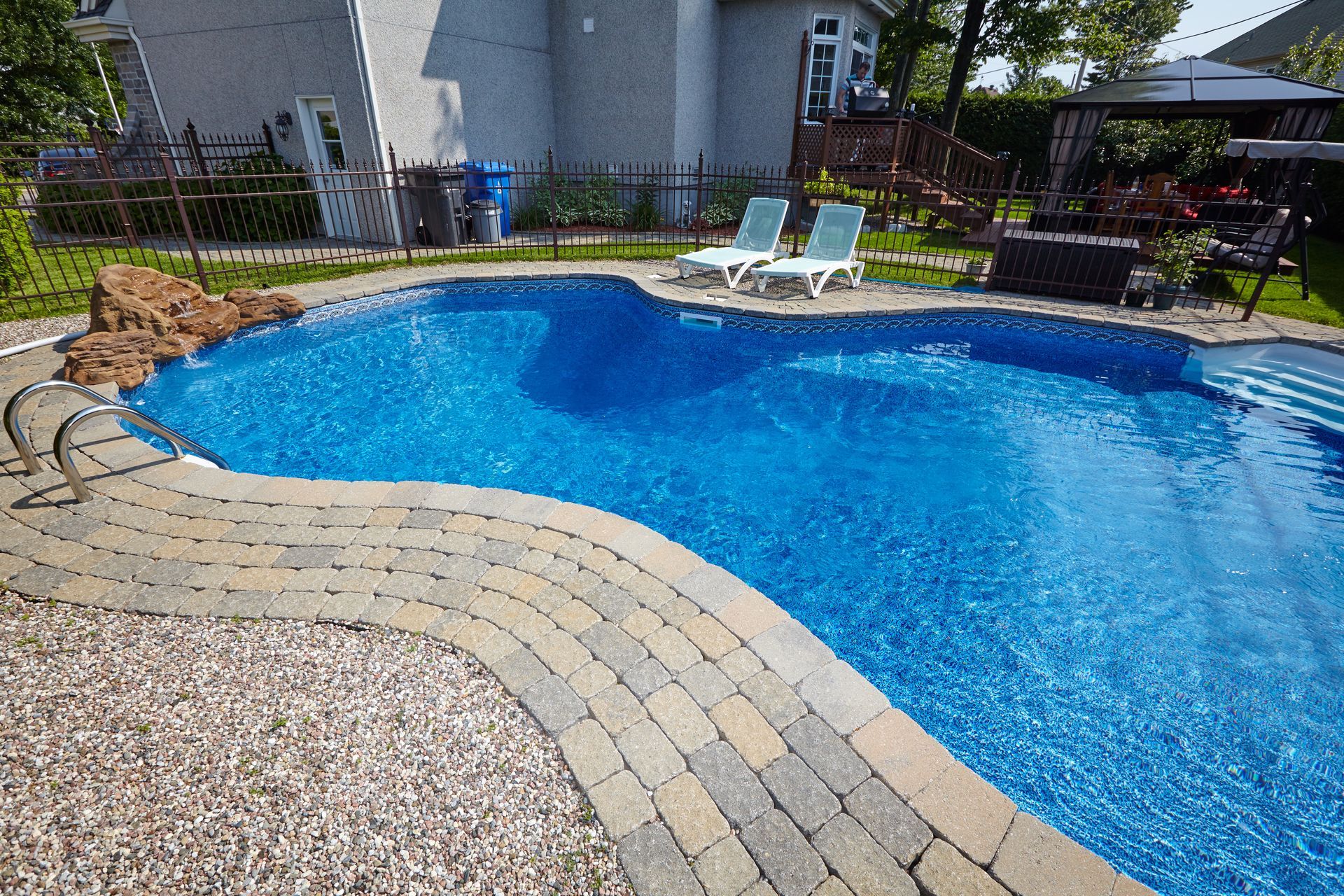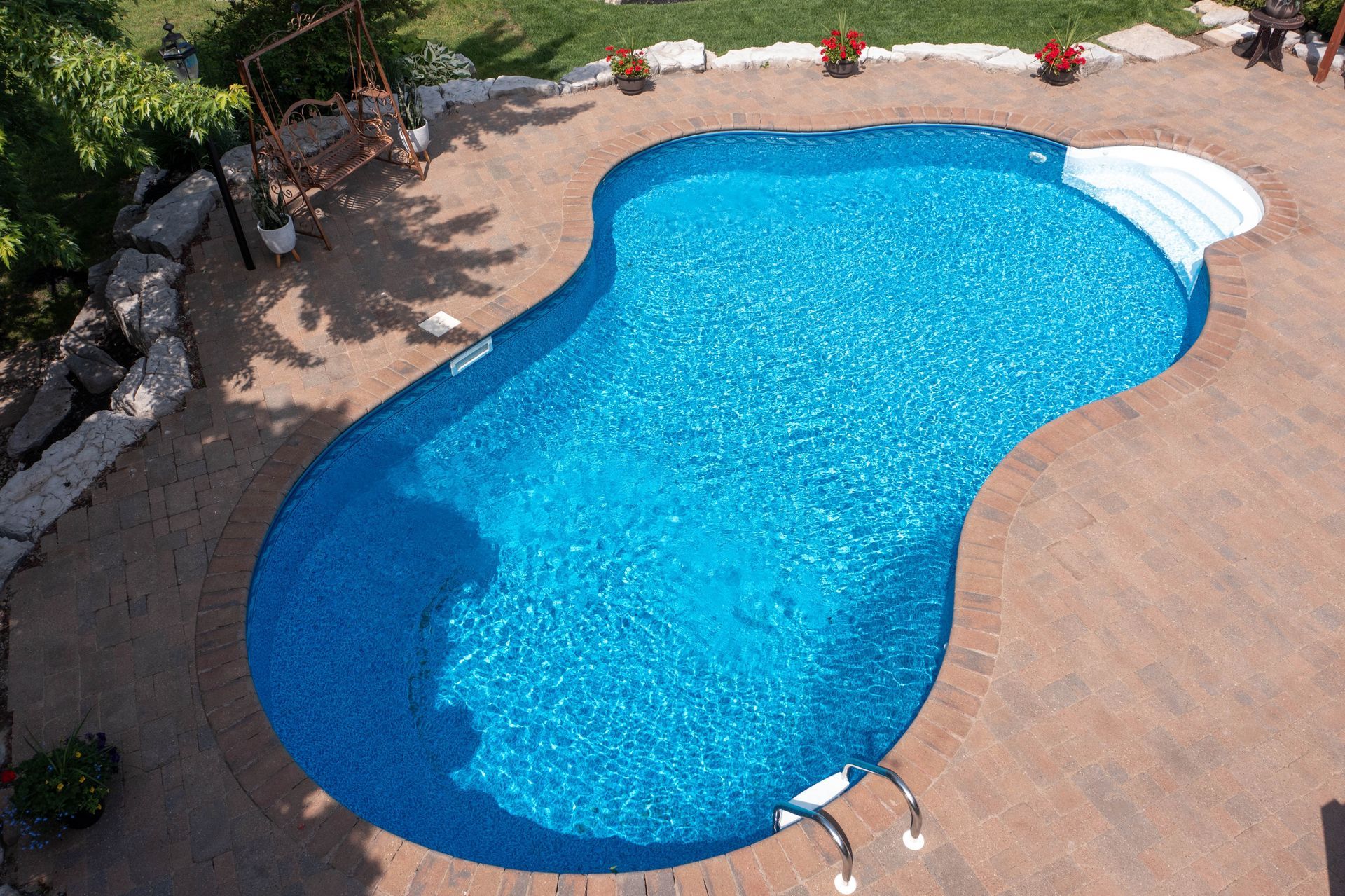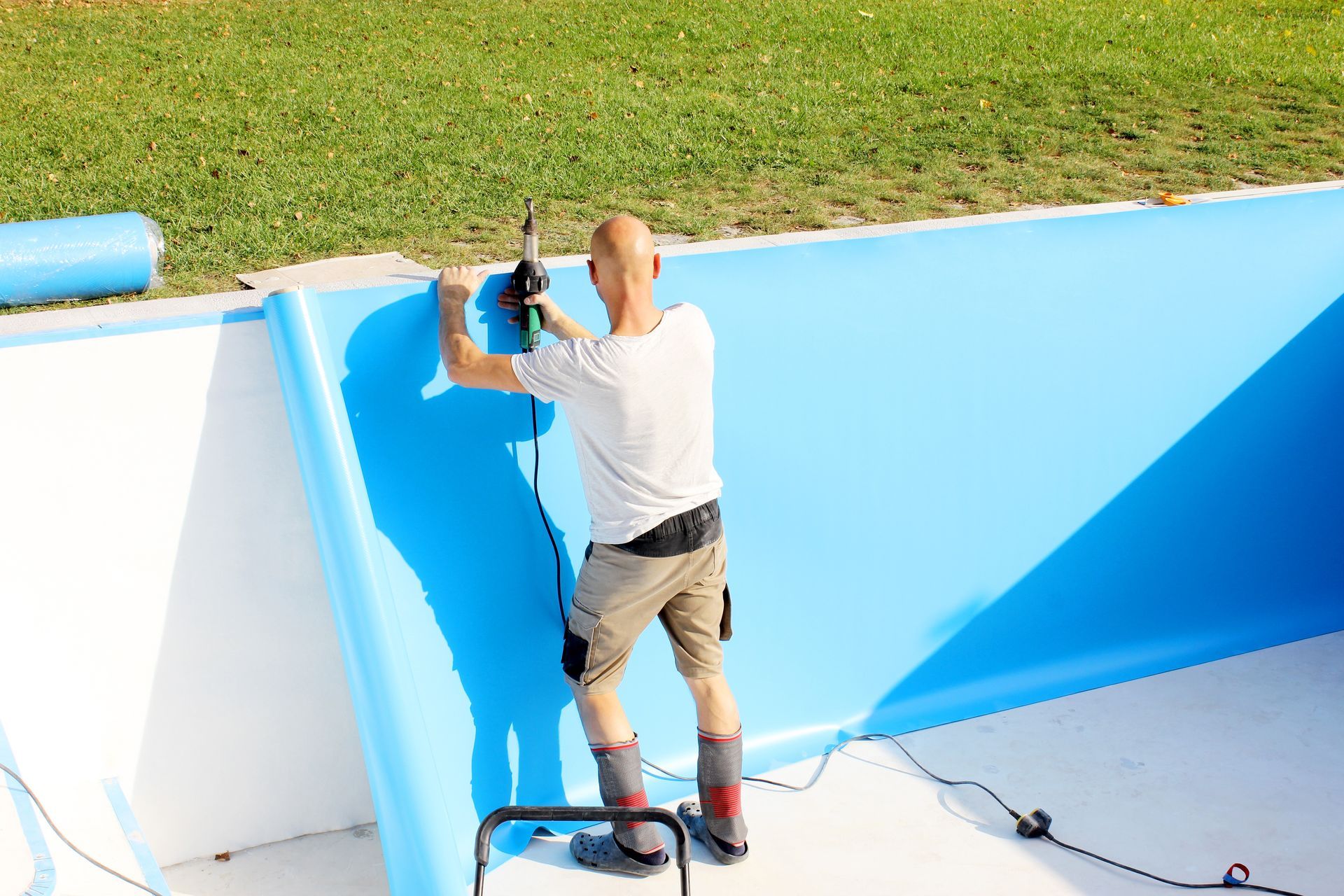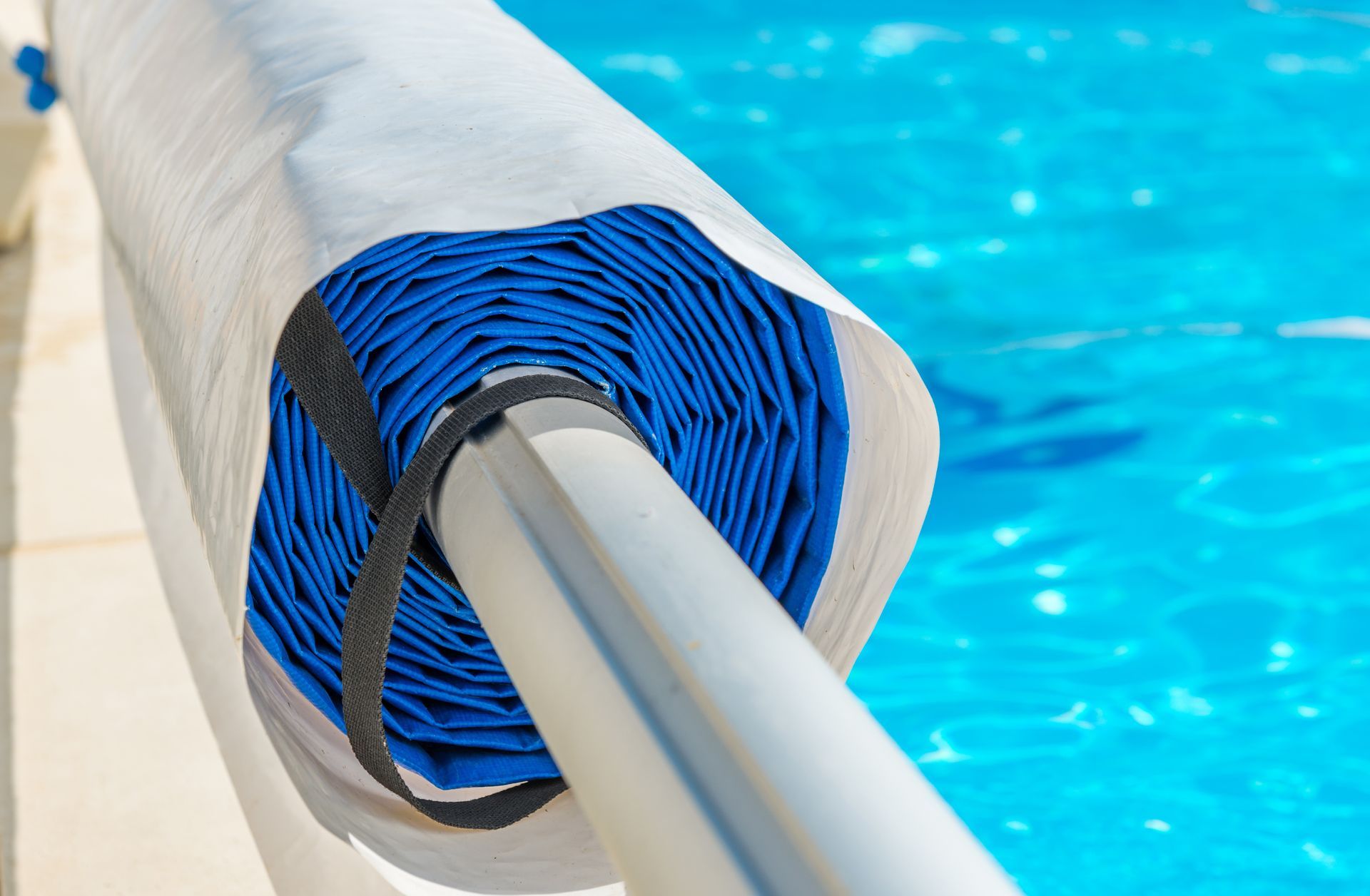How to Open Your Pool for Summer Fun!
Written by: A.G. Pool Masters
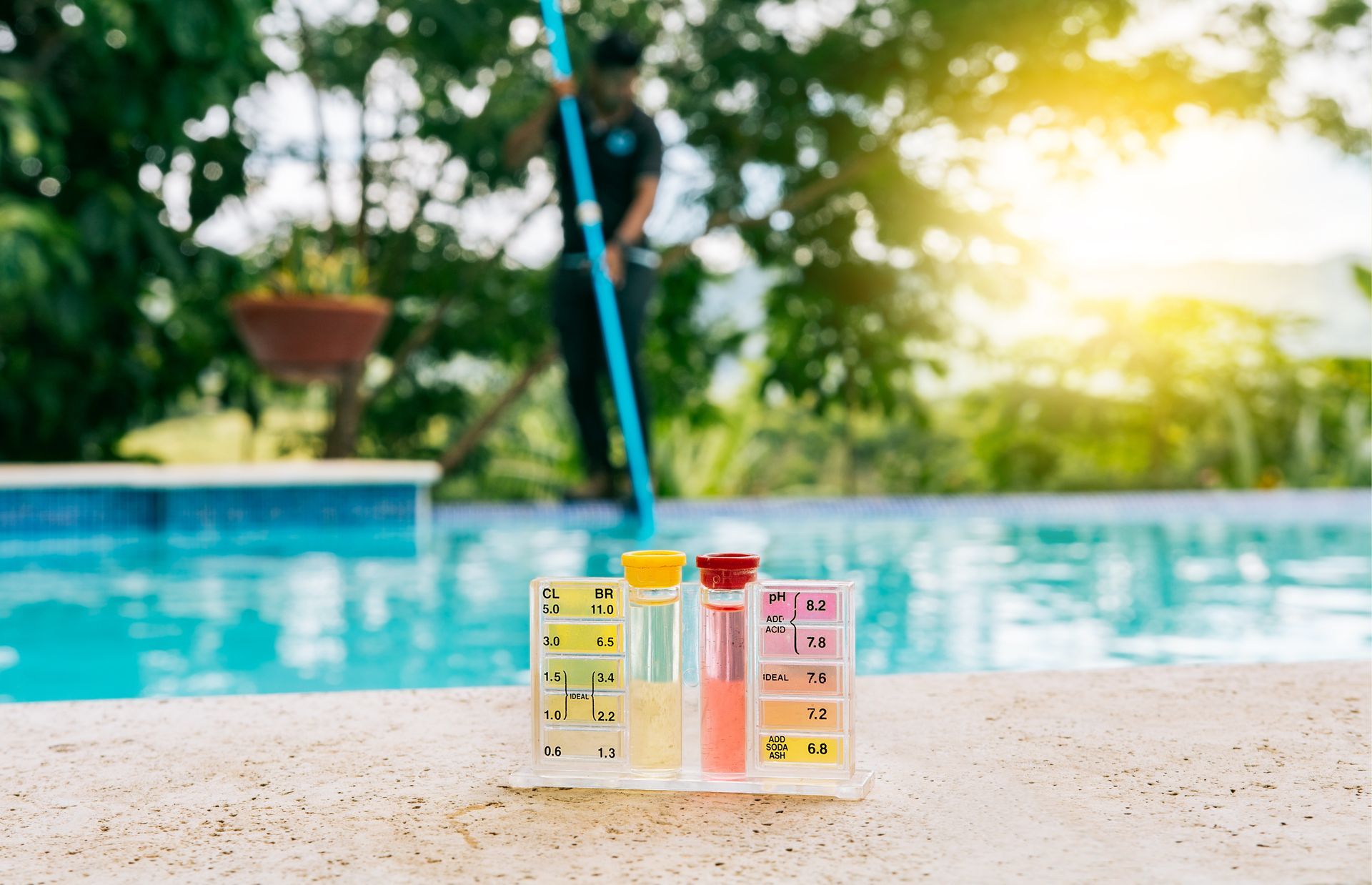
As the season of sunshine and outdoor grilling tiptoes closer, it's time to think about awakening your pool from its winter slumber. But it's not just about flipping a switch or pulling off a tarp, is it? No, it's a delicate dance of preparation, execution, and maintenance.
Understanding the right materials to gather, the optimal time to open, and the steps to prevent common mishaps are all part of the process. Stick around, as we're about to uncover the nuances of mastering this seasonal ritual.
Required Pool Opening Materials
Before diving into the pool opening process, ensure you have all the necessary materials and chemicals at hand to set up your pool efficiently and safely.
For materials, you'll need These tools will help you remove debris and test your water's chemical balance.
1. Pool cover pump
2. Soft broom
3. Winter cover cleaner or car wash soap
4. Start-up chemical kit
5. Pool gasket lubricant
6. Thread seal tape
7. Skimmer on a telescoping pole
8. Garden hose
9. Pool brush
10. Safety goggles
11. Chemical-resistant gloves
12. Pool shock
13. Test strips
14. A trusty sidekick
As for chemicals, your list should include pool shock, chlorine, pH increaser and decreaser, algaecide, sodium bicarbonate, and calcium chloride. These chemicals ensure a healthy and safe swimming environment by killing bacteria, balancing your water's pH, controlling algae growth, and maintaining proper water hardness. Remember, safety first! Always follow manufacturers' instructions when handling these chemicals. It is important to always add chemicals in the correct order to prevent waste, and injuries.
You're now set and ready to start opening your pool.
Optimal Pool Opening Timing
In the midst of spring, when the daily outside temperature consistently hits above 65 degrees, that's your cue to start opening your pool. This timing is critical for a couple of reasons. First, it prevents pollen from building up in your pool, which can clog your filter. Secondly, it avoids algae formation, as these organisms thrive in warmer waters. Got a heater? You can open earlier and start enjoying your pool sooner.
If you wait until summer to open the pool, you're providing optimal conditions for algae growth. So, early to late spring is your best bet, especially in warmer climates. Remember, your goal is to hit that sweet spot where the weather's warming up but still water is still cool enough to keep algae away. Make sure you are up and running with proper water chemistry prior to the warmer temperatures heating your pool water above 60 degrees. Mastery of pool opening is all about timing.
Detailed Pool Opening Steps
Now, let's dive into the nitty-gritty of pool opening with thirteen crucial steps you can't afford to skip:
Step 1: Clear the Cover Chaos
Grab your trusty soft broom and sweep away the remnants of winter—those pesky leaves and debris clinging to your pool cover. Don't forget to use the pool cover pump to banish any standing water. Remember, take it easy on the pump to avoid overworking it.
Step 2: Choreography for Cover Removal
It's time for a pool cover tango! Enlist an extra set of hands to make this dance smoother. Lay the cover flat, avoiding rough surfaces, and fold it like a pro accordion player with your partner on the opposite end. Use this moment to inspect the cover—replace it if needed, or bid it farewell if it's beyond repair.
Step 3: Pool Cover Spa Day
Unfold the cover and treat it to a spa day in your yard. Apply pool cover cleaner or car wash soap, and gently scrub away with a soft broom. Skip harsh tools or chemicals to avoid damage. Rinse, dry, and store it in a bag or container off the ground to keep critters away.
Step 4: Skim the Red Carpet
Your skimmer takes the spotlight now—sweep away debris from cover removal and catch any big players that could clog your pool's filtration system. It's your pool's red carpet moment!
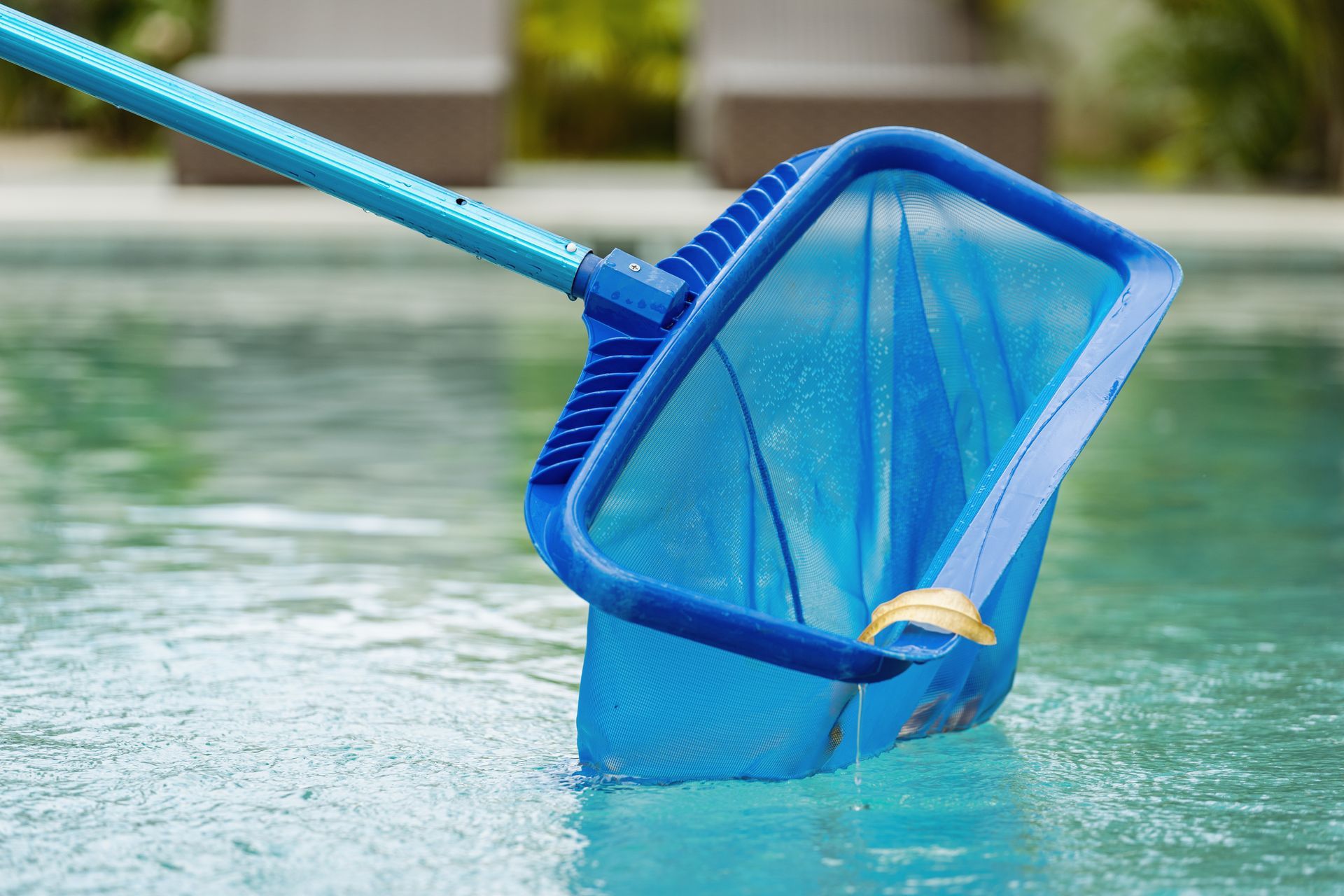
Step 5: Plug and Unplug
Time to bid adieu to those winterizing plugs! Remove them as you walk around the pool, keeping an eye out for bubbles as the water flows back into the pipes. Don't forget to unplug your skimmer's winter companion, whether it's an ice compensator or a soda bottle.
Step 6: Accessory Relaunch
Bring back the pool's stars—ladder, diving board, step rails, slide—all the accessories that took a winter break. A little lubrication and greasing wouldn't hurt either. Let the poolside glamor return!
Step 7: H2O Topping Ceremony
Your pool may have lost a few inches over the season, so top it off to avoid a chemistry balancing act later. And don't forget, a hose filter keeps contaminants at bay.
Step 8: Pump and Filter Premiere
Cue the return of your pump and filter, ensuring a star-studded comeback. Secure drain plugs and show some love to O-rings with pool gasket lubricant. Open return side valves, flip the circuit breaker, and let the water flow. Applause for your pool pump's priming moment!
Step 9: Metal Levels Harmonization
Your pool water's metal levels may have spiked during hibernation. Add a metal sequestrant to keep staining and buildup away. It's the pre-show ritual for a sparkling pool performance.
Step 10: Water Balancing Ballet
Time for a water chemistry waltz. Whether it's a start-up kit or individual chemicals, balance alkalinity, pH, and calcium hardness. Take a water sample trip to your pool supply store for precision—a backstage pass to crystal-clear water all season.
Step 11: Brush and Vacuum Choreography
Show your pool some love with a gentle brush to fend off potential algae. Follow up with a thorough brushing session and a vacuum session to bid adieu to any lingering debris.
Step 12: Shock Splash
Before you add chlorine, gear up with safety goggles and chemical-resistant gloves. Pour the shock directly into the pool or dissolve it in a water-filled bucket. Avoid mixing different shock types in the same bucket to prevent a chemical clash.
Step 13: Filter Fiesta
The hard work is done! Let the filtration system party for at least 24 hours, mingling the shock with the water and filtering out remaining debris and spores. By the next day, your pool should be crystal-clear and ready for a swanky swim. If it's a tad cloudy, wait for the haze to lift or speed up the process with a pool water clarifier.
Pool Equipment Inspection
Regularly inspecting your pool equipment is a crucial step in maintaining a safe and efficient pool system. It's not just about ensuring the water's cleanliness but also prolonging the lifespan of your equipment. Start by checking your pump and filter for any signs of damage or wear. Listen for unusual noises, look for leaks, and monitor the pressure gauge. The pump should run smoothly and the pressure within the normal range. If it's too high or too low, it might indicate a problem.
Next, examine your pool's heater and skimmer. Ensure the heater's temperature is consistent, and the skimmer is free from debris. Lastly, don't forget to inspect the ladder and diving board for any loose parts. Regular maintenance can prevent unexpected failures and costly repairs.
Post-Treatment Swimming Guidelines
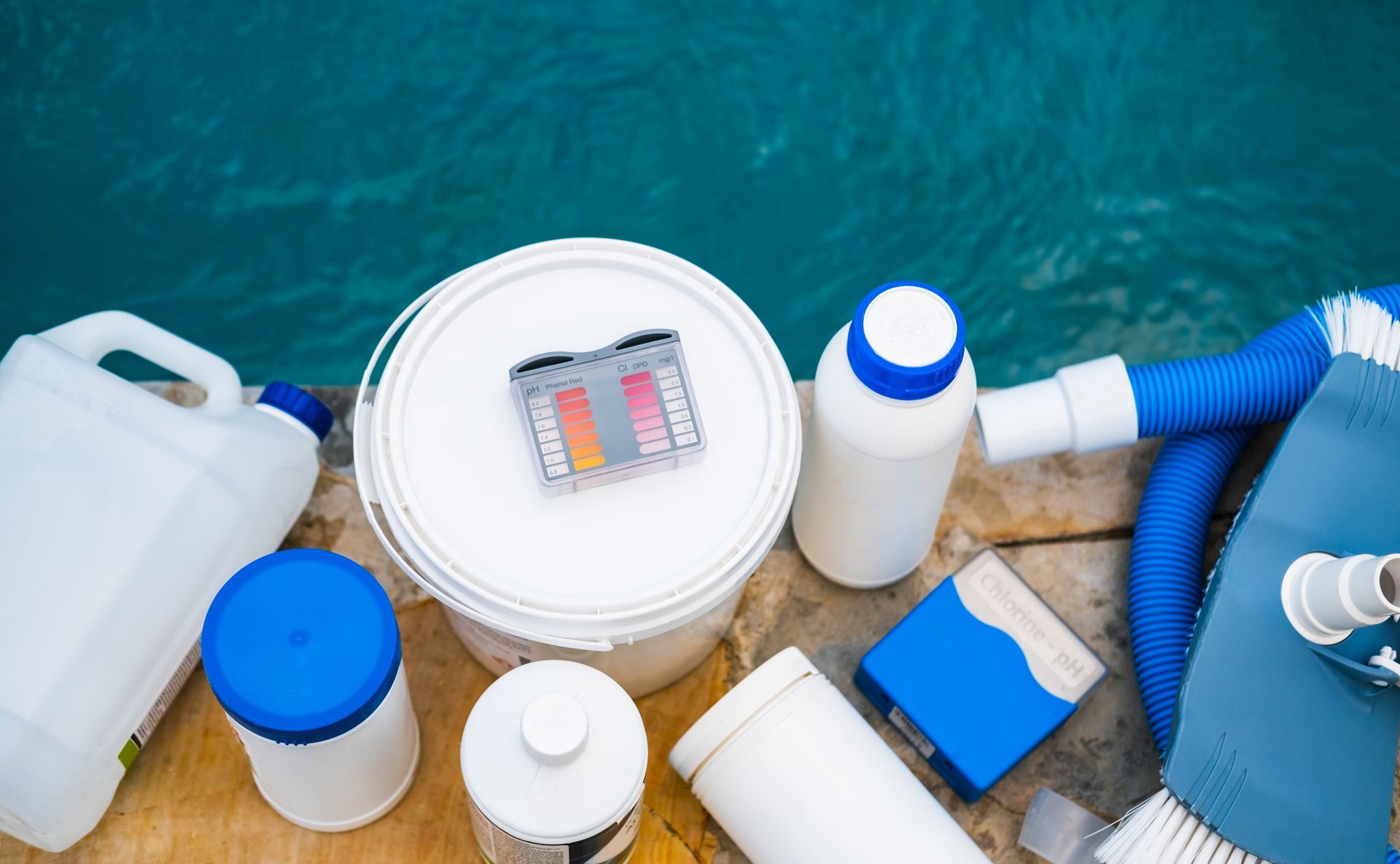
Once you've properly shocked your pool, it's crucial to understand the guidelines for safe swimming post-treatment. You need to wait until chlorine levels drop to 1.0-3.0 ppm before you dive in. This typically takes about eight hours, but it's best to test the water to be sure. Use a quality test kit to get accurate results.
Regularly testing your water isn't just necessary post-shock; it's a vital part of maintaining a healthy, clean pool. Establish a routine of brushing the pool and vacuuming the floor, too, to keep algae at bay and ensure the water remains clear. Remember, a well-treated pool isn't just about chemicals – it's about regular maintenance and diligent water testing.
Additional Pool Setup Information
Diving deeper into pool setup, it's essential to tackle some frequently asked questions and provide practical maintenance tips to ensure your swimming pool remains in top shape.
You might wonder about the best time to open your pool - it's when the outside temperature consistently hits above 65 degrees, Or when the water temperatures reach 60 degrees. Opening it too early could lead to pollen buildup and filter clogging, and opening too late may lead to algae growth.
As for materials, besides chemicals like pool shock and chlorine, you'll need non-chemical items like a pool pole and vacuum head. Regularly check your pump and filter for damage to avoid sudden breakdowns.
Use test strips to keep your pool's chemical levels in check, and remember to frequently brush your pool walls and vacuum the floor to prevent algae growth.
Recap and Key Takeaways
Wrapping up our comprehensive guide on pool opening mastery, let's summarize the key takeaways to keep your swimming pool in top-notch condition.
First, gather both non-chemical and chemical materials for setup. Open your pool when the daily temperature is consistently above 70 degrees, ideally in late spring.
Follow a step-by-step process for opening, including removing the pool cover, clearing debris, and reinstalling pool features. Regularly inspect and maintain your pool equipment, especially the pump and filter.
Use test strips to balance your pool water chemically and keep it clean by brushing the walls and vacuuming the floor. Don't neglect shocking and filtration procedures.
Lastly, establish a routine for regular testing, cleaning, and maintenance. Your pool's health depends on it.

